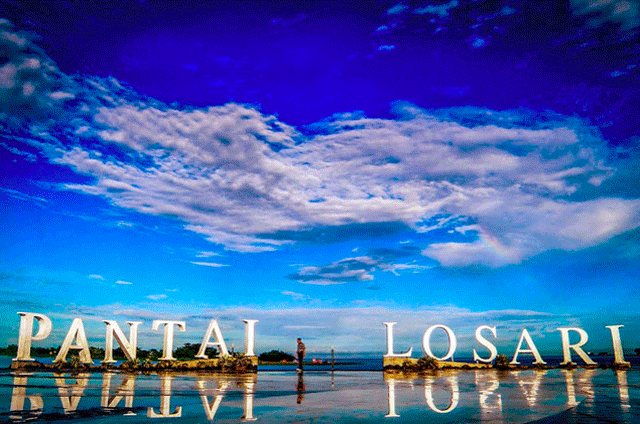South Sulawesi has many tourist destinations that are not inferior to other tourist destinations throughout Indonesia. In fact, if viewed carefully, South Sulawesi is worth mentioning as 'Bali baru'.
This is the reason why South Sulawesi deserves to be called 'Bali baru'
South Sulawesi has Losari Beach that is not less crowded at Kuta beach Bali
Losari Beach was once dubbed the beach with the longest table in the world. This is because there are many stalls along the beach. These tent stalls indicate that once, Losari beach is very famous. No less prestige with Kuta beach Bali.
South Sulawesi has Tanjung Bira that is not less cool Nusa Penida Bali for snorkeling business
Tanjung Bira tourism is not only known by domestic tourists only, but to foreign countries. Do not believe? try deh to Tanjung Bira and see the beauty of the underwater that is not inferior to Nusa Penida. This is a plus for South Sulawesi to become a 'new Bali'.
In South Sulawesi, there is Trans Studio Makasar not less crowded with the playground in Bali
Standing on an area of 2.7 hectares, Trans Studio Makasar is crowded by visitors who are not inferior to Green Park Kuta, or other playgrounds in Bali.
South Sulawesi has a market in the famous Somba Opu Makasar Street
From the washing oil typical of South Sulawesi, Songkok To Bone, Sengkang Sutera, sarong mandar, Toraja coffee, until the typical snack of South Sulawesi are all there.
Rammang-Rammang : The Halong Bay of Sulawesi
South Sulawesi has a unique Bantimurung National Park and full of butterfly species
Seeing the wild animal scene is already commonplace, but when in Bantimurung National Park you will find a butterfly insect that roamed here and there. Funny?
In addition to the various types of butterflies, in Bantimurung National Park has beautiful scenery such as, hills, caves, waterfalls, and many others.
Sulawesi also has an Ammatoa custom area which is no less cool than Balinese custom
Located 56 km from Balakumba, Tana Toa village has many uniqueness like Bali island.Despite having a different culture from Bali, Ammatoa custom also has a cool existence.
You should occasionally visit the village of Tana Toa.
South Sulawesi has a really cool Ke'te Ke'te! You will see the custom house still in use today
Ke'te Kesu means the center of activity. The center of activities in South Sulawesi includes villages, handicraft centers, to customary graves. This is a form of Tana Toraja known for its traditional customs and life of its people throughout the archipelago.
South Sulawesi is famous for the famous Pinisi shipbuilding craft all over the world
Pinisi wooden ships have been used in Indonesia for centuries, and are thought to have existed before the 1500s. This pinisi is a typical Indonesian sailing ship from the Bugis and Tribe of Makassar, precisely from the village Bira Bonto Bahari District Bulukumba District.
In its history, Pinisi was first made by the Crown Prince of Luwu to sail to China to marry Chinese princesses. Hem .. So sweet, yes!
South Sulawesi also has processed Nasu Palekko duck that tastes spicy crazy! No less equally duck betutunya Bali
duck nasu palekko 'is typically duck-based duck-basted cuisine with spicy flavor, this dish is very popular for the people of South Sulawesi
Although different ethnic and religious, South Sulawesi always live side by side
South Sulawesi has several tribes, namely; Bugis, Makassar, Mandar, Toraja, Duri, Pattinjo, Bone, Maroangin, Endekan, Pattae, Kajang / Konjo and various religions but always live side by side. Like Bali, South Sulawesi is feasible to be the destination of your next destination.
***
There are still many things that show that South Sulawesi deserves to be called 'Bali Baru'.What do you think? Agreed, right?



























